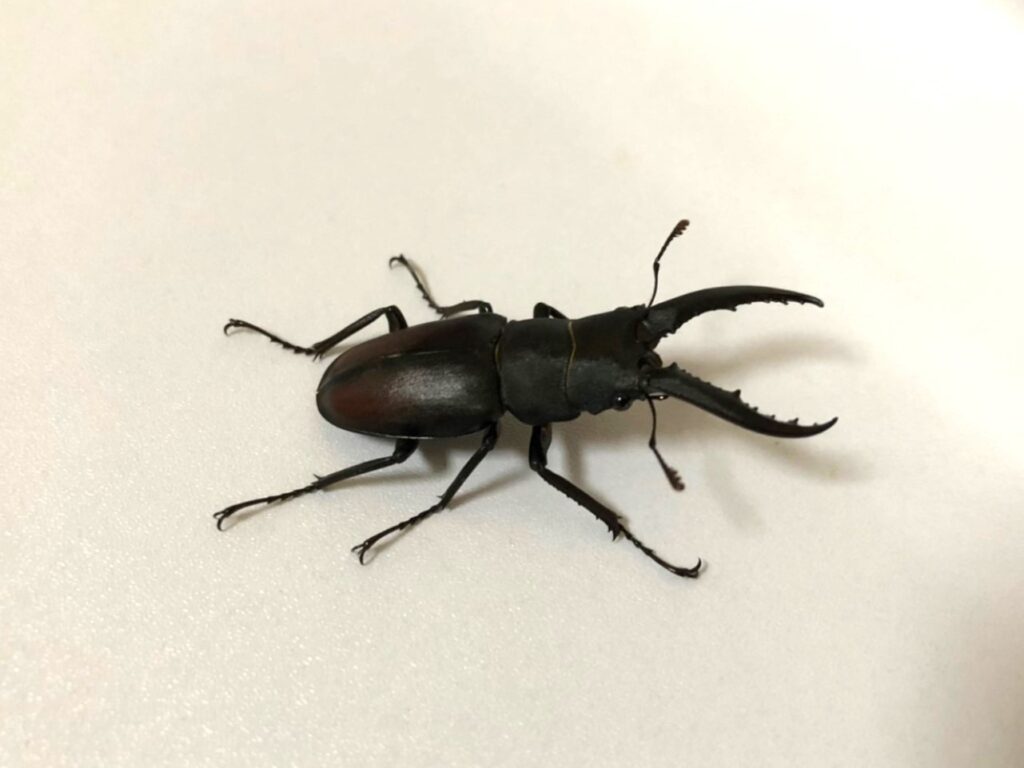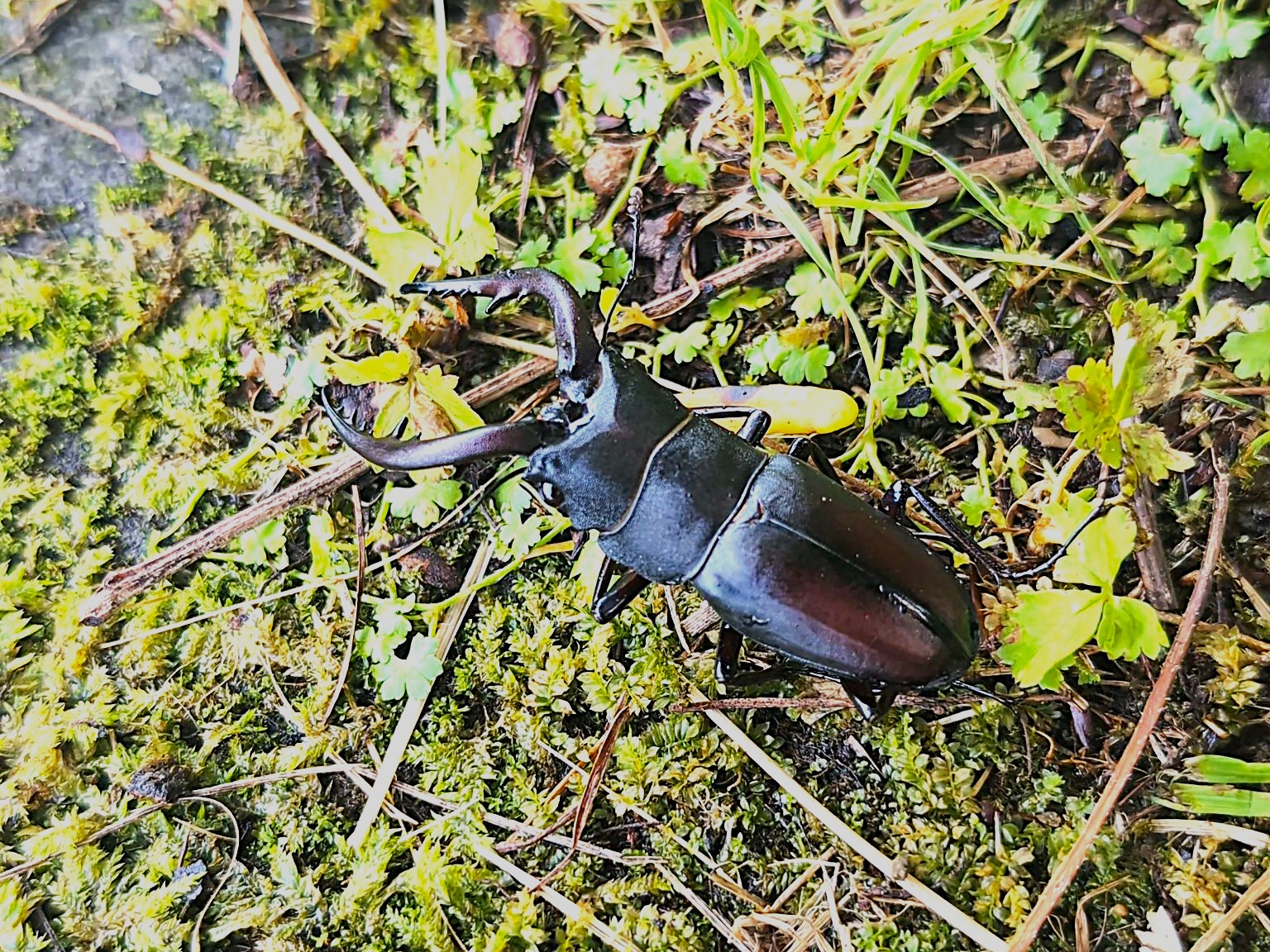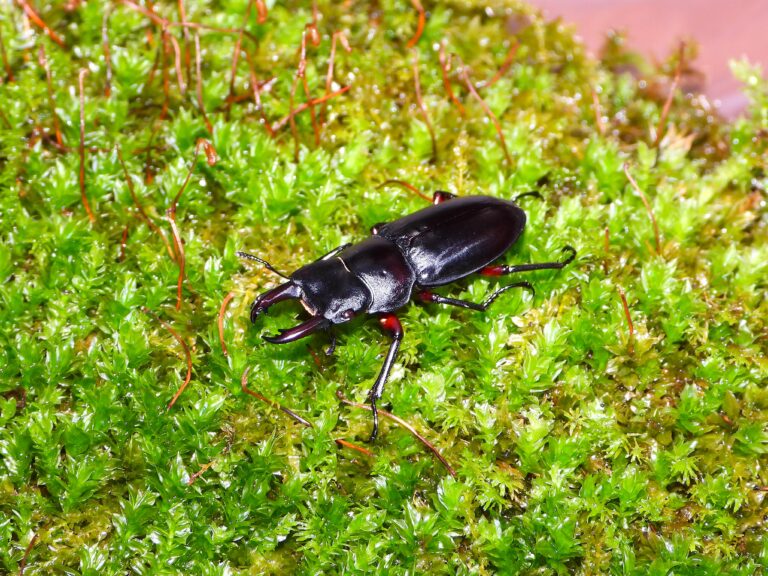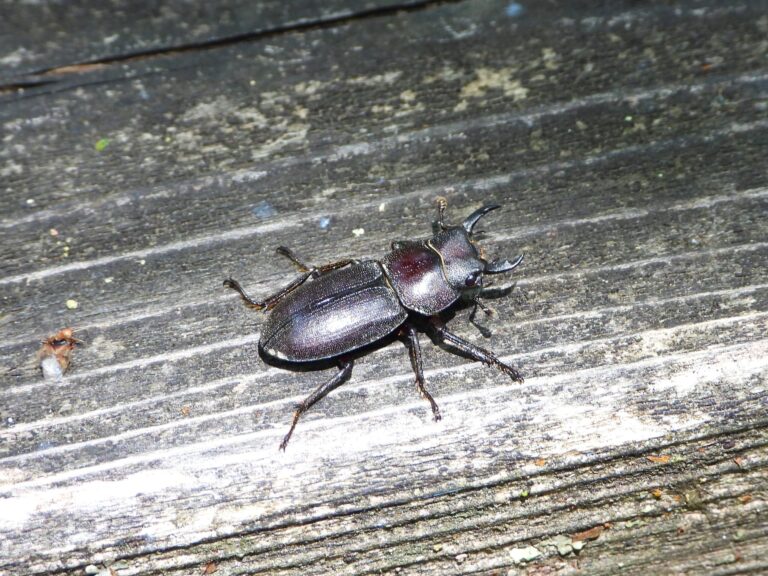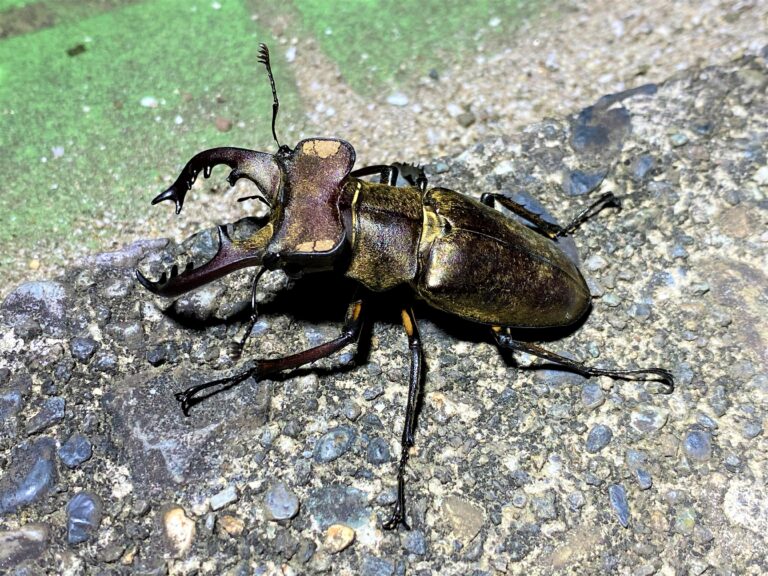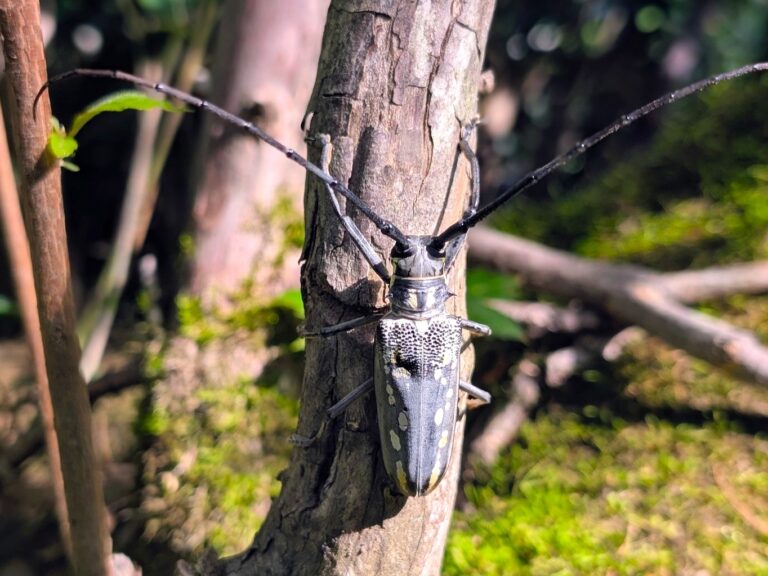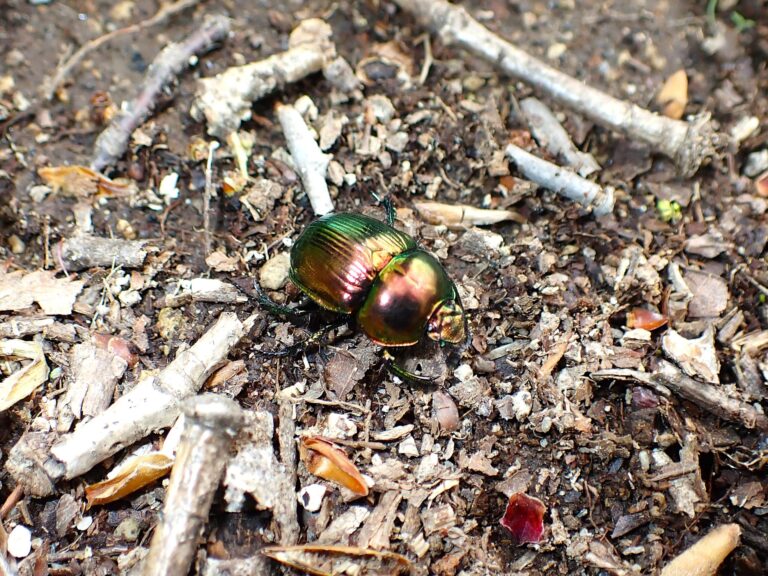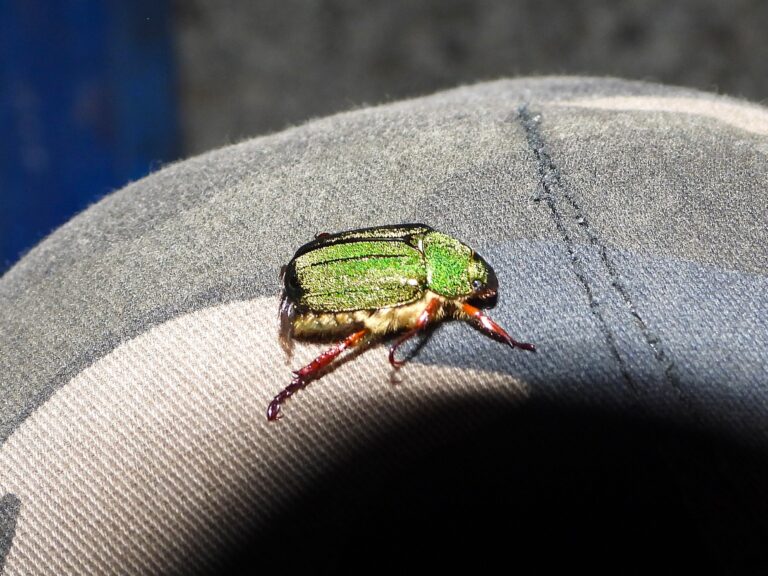Japanese Saw Stag Beetle (Prosopocoilus inclinatus) – Wildlife of Japan
Introduction
The Japanese saw stag beetle (Prosopocoilus inclinatus) is one of Japan’s most familiar summer beetles. Widespread from Hokkaidō through Honshū, Shikoku, and Kyūshū, it frequents woodlands and satoyama where oak trees are common. It also occurs on several islands and on the Korean Peninsula.
Appearance
Males measure roughly 26–75 mm in total length and are famous for their saw-toothed mandibles, which vary dramatically between “major” males (huge curved jaws) and “minor” males (shorter, straighter jaws). Females are smaller with short mandibles (about ~25–38 mm). Color ranges from dark brown to black with a glossy sheen.
Habitat
This species favors deciduous forests, shrines and woodland edges, especially where oaks provide sap flows and where rotting hardwood is available for larvae.
Behavior
Nocturnal adults fly from early summer evenings and gather at tree sap; they are readily drawn to lights. Males fight by grappling and flipping rivals with their enlarged mandibles, while smaller males often rely on alternative tactics to secure mates.
Diet
Adults feed on tree sap and occasionally fermented fruit bait. Larvae live in decayed hardwood, feeding on rotted wood until pupation.
Reproduction
Breeding peaks in summer around sap sites. Females lay eggs in soft, decayed wood. Development typically takes around two years from egg to adult under natural conditions, though 1–3 years is reported depending on temperature and food quality.
Conservation
The species is common nationwide, but local pressures—loss of broadleaf woodland and over-collecting at popular spots—can reduce numbers. Maintaining satoyama habitats and practicing responsible collecting help keep populations stable.
Author’s Impression
The saw stag beetle has always fascinated me with its powerful, saw-like jaws. When I was a child, I often collected them from chestnut trees, where they also thrive besides oaks. One of their unique habits is dropping to the ground when they sense vibrations. By gently tapping or shaking the tree, the beetles would sometimes fall down—a memory that made every summer night exciting and full of discovery.
